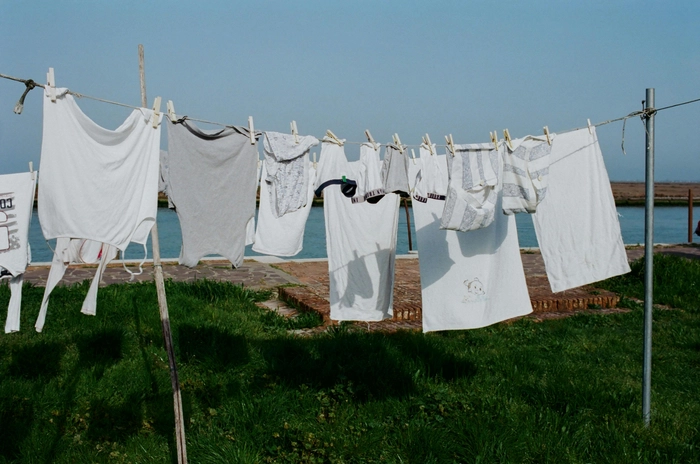Knowing how to properly wash different types of fabrics is essential for maintaining the quality, color, and longevity of your clothes. Each fabric has unique properties that require specific care to prevent damage, shrinkage, or fading. Here’s a comprehensive guide on how to wash various types of fabrics, ensuring your wardrobe stays fresh and vibrant.
1. Cotton
Cotton is a durable, breathable fabric commonly used in everyday clothing like t-shirts, jeans, and underwear.
- Washing Instructions:
- Machine Wash: Use a regular or gentle cycle with cold or warm water.
- Detergent: Use a mild detergent to protect the fibers.
- Drying: Tumble dry on a low heat setting or air dry to prevent shrinkage. Remove promptly to avoid wrinkles.
- Ironing: Use a hot iron if necessary, but always check the care label first.
2. Linen
Linen is a lightweight, breathable fabric perfect for warm weather but can wrinkle easily.
- Washing Instructions:
- Machine Wash or Hand Wash: Use a gentle cycle with cold water or hand wash to avoid damage.
- Detergent: Use a mild detergent.
- Drying: Air dry or tumble dry on low. Remove while slightly damp to reduce wrinkles.
- Ironing: Iron while damp on a medium to high setting for a crisp finish.
3. Silk
Silk is a luxurious, delicate fabric that requires special care to maintain its luster.
- Washing Instructions:
- Hand Wash: Gently wash in cold water with a special silk detergent or a mild detergent.
- Machine Wash: If using a machine, place the silk item in a mesh laundry bag and use the delicate cycle with cold water.
- Drying: Air dry flat, away from direct sunlight to prevent fading.
- Ironing: Use a low heat setting, and place a cloth between the silk and the iron to protect the fabric.
4. Wool
Wool is a warm, natural fiber often used in sweaters, coats, and scarves.
- Washing Instructions:
- Hand Wash: Wash in cold water with a gentle wool detergent.
- Machine Wash: Use a wool-specific or delicate cycle with cold water, and place the wool item in a mesh laundry bag.
- Drying: Lay flat to air dry. Never hang, as wool can stretch and lose its shape.
- Ironing: Use a steam iron on a low setting or steam the garment to remove wrinkles.
5. Polyester
Polyester is a durable, synthetic fabric that resists wrinkles and shrinking.
- Washing Instructions:
- Machine Wash: Wash in warm water on a regular cycle.
- Detergent: Use a standard detergent.
- Drying: Tumble dry on low heat or air dry. Polyester dries quickly, so high heat is unnecessary.
- Ironing: Iron on a low setting or use a steamer to remove any wrinkles.
6. Nylon
Nylon is a synthetic fabric known for its strength and elasticity, commonly used in activewear and swimwear.
- Washing Instructions:
- Machine Wash: Use cold water on a gentle cycle.
- Detergent: Use a mild detergent.
- Drying: Air dry or tumble dry on a low heat setting. Avoid high heat, as it can damage the fabric.
- Ironing: Avoid ironing; if needed, use a low heat setting.
7. Rayon
Rayon is a semi-synthetic fabric that is soft and drapes well, but it’s delicate and prone to shrinking.
- Washing Instructions:
- Hand Wash: Wash in cold water with a mild detergent.
- Machine Wash: If allowed, use a delicate cycle with cold water. Place the item in a mesh laundry bag.
- Drying: Lay flat to air dry, as rayon can easily shrink or stretch out of shape in a dryer.
- Ironing: Use a low heat setting, and iron while the garment is slightly damp.
8. Spandex/Lycra
Spandex, also known as Lycra, is a stretchy, durable fabric often used in athletic wear and swimwear.
- Washing Instructions:
- Machine Wash: Use cold water on a gentle cycle.
- Detergent: Use a mild detergent. Avoid fabric softeners, as they can break down the elasticity.
- Drying: Air dry or tumble dry on low heat. Avoid high heat, as it can damage the fabric’s stretch.
- Ironing: Typically not necessary, but if needed, use a very low heat setting.
9. Denim
Denim is a sturdy cotton fabric used primarily in jeans and jackets.
- Washing Instructions:
- Machine Wash: Wash inside out on a cold cycle to prevent fading and wear.
- Detergent: Use a mild detergent, and avoid bleach.
- Drying: Air dry or tumble dry on low heat. High heat can cause shrinkage and damage to the fabric.
- Ironing: Iron on a medium to high setting if needed, or use a steamer.
10. Velvet
Velvet is a soft, luxurious fabric with a distinct texture that requires careful washing.
- Washing Instructions:
- Hand Wash: Wash in cold water with a gentle detergent.
- Dry Cleaning: For expensive or intricate velvet items, consider dry cleaning.
- Drying: Air dry flat, avoiding direct heat or sunlight to preserve the fabric’s texture.
- Ironing: Avoid ironing. If necessary, use a steamer to gently remove wrinkles.
Conclusion
Properly washing your clothes according to their fabric type is crucial for maintaining their appearance and longevity. By following these guidelines, you can ensure that your garments remain in excellent condition, extending their lifespan and keeping your wardrobe looking fresh. Always remember to check the care labels before washing, and when in doubt, opt for gentle methods to avoid damaging your favorite pieces.


